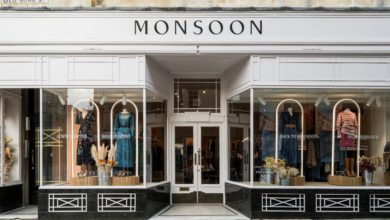Budget business rates plan ‘an attack on London and the Southeast’, says Colliers
Firm warns new multipliers will push up costs for larger properties as rates set to rise 10.2% from April

Register to get 1 free article
Reveal the article below by registering for our email newsletter.
Want unlimited access? View Plans
Already have an account? Sign in
Business rates changes announced in the November Budget 2025 amount to “an attack on London and the Southeast”, according to Colliers, which said most of the firms facing higher charges under the new system are based in the two regions.
The comments came as the government confirmed that overall business rates bills will rise by 10.2% from next April, taking the total from £33.6bn to £37.1bn.
The government’s new structure includes a high-value business rates multiplier of 50.8p for all properties with a rateable value of £500,000 and above. It said 21,000 properties will fall within the higher bracket, of which 10,700 are in London and the South East due to higher property values.
Story Stream: More on Business Rates
- Retail sales slow in October as shoppers hold off for Black Friday
- Co-op to open 50 new stores before Christmas
- Footfall drops for sixth consecutive month as shoppers await Budget impact
- West End festive sales expected to rise 1.3% to £1.7bn
- Rates hike threatens 500 big high street outlets, trade bodies warn
The measures form part of a broader package that also ends the 40% retail, hospitality and leisure rates relief from next April. The relief, previously capped at £110,000 per business, will be withdrawn entirely.
Alongside the higher multiplier, ministers confirmed four other multipliers. Smaller retail, hospitality and leisure properties with a rateable value below £51,000 will be charged 38.2p, with a 43p rate applied to those between £51,000 and £499,999.
The national small business and standard multipliers for non-RHL properties will be set at 43.2p and 48p respectively. A 1p supplement will also apply for one year from 1 April 2026 for ratepayers not receiving Transitional Relief or the Supporting Small Business Scheme.
The government said the lower RHL multipliers are intended to offset the loss of reliefs and provide lasting support to high streets. It stated that more than 750,000 properties will benefit from the RHL rates.
A redesigned Transitional Relief scheme worth £3.2bn is intended to limit bill increases, providing more support for larger properties including airports, hotels and industrial assets identified in the Industrial Strategy.
The Supporting Small Business Scheme will offer more than £500m in relief, with an additional £1.3bn to help RHL properties adjust to permanently lower tax rates. Small firms retaining Small Business Rates Relief after acquiring a second property will also see the retention period extended from one year to three.
John Webber, head of business rates at Colliers, said the removal of the cap on RHL support was welcome but warned that smaller firms may still see higher bills.
He said: “Whilst we are pleased to see that the cap on support for RHL operators has now been removed, we are concerned that the discount on the smaller multiplier is only 5p which is limited and may not offset the loss of reliefs these smaller shops and restaurants received previously, particularly if their RV rise as anticipated in the 2026 Revaluation.”
He said the decision to raise the multiplier for properties with rateable values above £500,000 would increase costs for offices, industrial premises and major retail sites. Webber said: “This policy is also an attack on London and the Southeast. By its own admission, of the 21,000 properties paying the higher multiplier – 10,700 are in London and the Southeast.”
He added that the government’s focus on large distribution warehouses was not borne out by the figures, noting that only 1,900 of the 21,000 properties in the higher band are warehouses.
Webber said: “By this action the government has effectively shifted the cost of this support from itself to UK plc, putting an even further strain on businesses across the board – and putting even further pressure on the high street since it is the big retail and leisure operators who provide anchor tenants, encourage footfall and create the jobs. Tesco, Asda and Sainsbury’s all have at least 90% of the properties in the higher multiplier range.
“Such increased costs are effectively a stealth tax and will only lead to food inflation. It will do nothing to stimulate investment and expansion.”
He said: “As well as the five new multipliers we still have additional multipliers for the City of London and supplements for a number of BIDS. Analysing business rates will not be as straight forward as previously, costing time and money – the ‘uniform’ business rate seems to have disappeared forever.”
Webber concluded: “Listening to the Chancellor today has done little to allay my concerns for businesses in the difficult economic period ahead. The government’s business rates ‘reforms’ are merely tinkering around the edges and will provide limited benefit – merely making the system more complicated.
“Proper longer term business rates reform or a concerted effort to reduce the multiplier to 35p in the £, something that everyone can afford, seems to have gone out of the window.
“As we await the draft list for the 2026 Revaluation also published today – one in which we expect to see RVs rise across the board following post Covid rental growth, I am nervous as to how businesses will react. Many have warned that increased business rates will impact jobs. Sadly, I don’t think the much-needed investment and growth plans will be on the agenda for many businesses for some time to come.”







